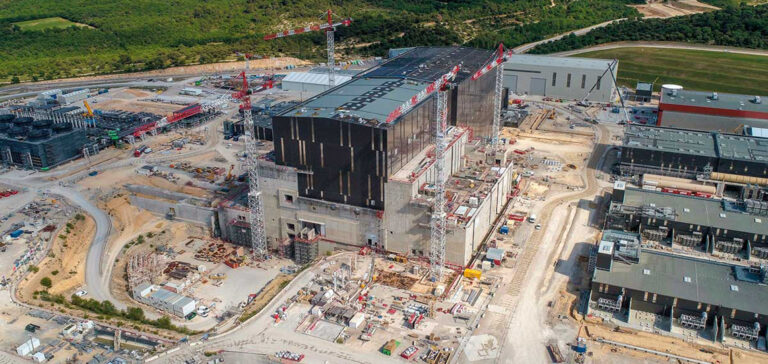The ITER Challenge was highlighted at the 29thIEA Fusion Energy Conference. Is nuclear fusion, the promise of a clean, unlimited energy source, in danger? A new schedule for this multinational project, located at Cadarache in the south of France, is due to be presented to the Board for approval in the middle of next year. However, considerable delays are looming on the horizon, calling into question the achievement of the initial objective: the first fusion in 2025.
Major technical challenges
Barabaschi, head of the ITER project, speaks of a “change of culture” within the team, emphasizing transparency regarding problems encountered. While the power supply system has been completed, and the major components are in place, technical challenges have hampered the path to fusion.
The problem of cracks and welds in the vacuum vessel, as well as geometric non-conformities, led to the withdrawal of key components. Nevertheless, repair contracts have been awarded to remedy these problems. The transition of the first wall from beryllium to tungsten is also on the agenda, raising questions about the choice of materials.
Crucial Knowledge Management
In addition to the technical challenges, the ITER project has to deal with the issue of knowledge management. Much of the expertise required to build such an installation was lost along the way. Rebuilding this knowledge base is imperative to the success of the project.
The Impact of the Pandemic
Finally, the impact of the COVID-19 pandemic did not spare ITER. Delays and disruptions have created a climate of uncertainty about the future of nuclear fusion. While progress continues to be made, it is clear that adjustments are needed to achieve the targets set.
A Clean Energy Promise
The ITER project, the fruit of collaboration between thirty-five nations, represents hope for the future of energy. However, the obstacles on the road to nuclear fusion should not be underestimated. The crucial question remains: will nuclear fusion remain a promise or become a reality?
The future of nuclear fusion is still up in the air, but one thing is certain: the eyes of the world are riveted on ITER, because the success of this project could change the energy landscape.






















